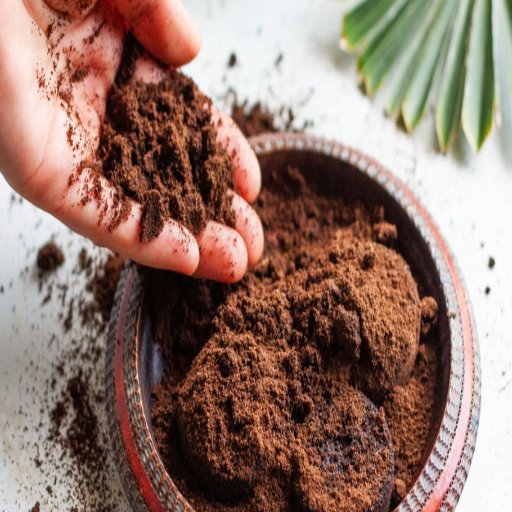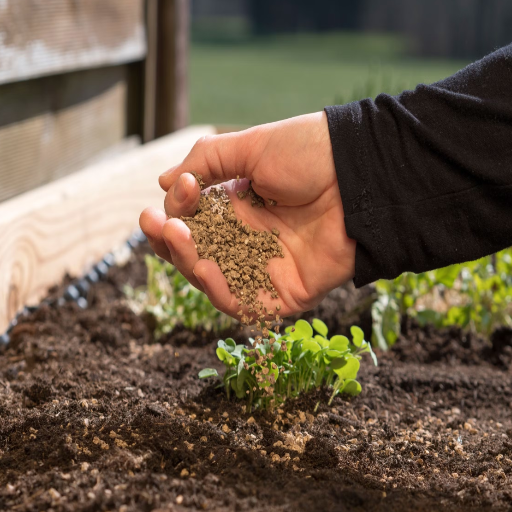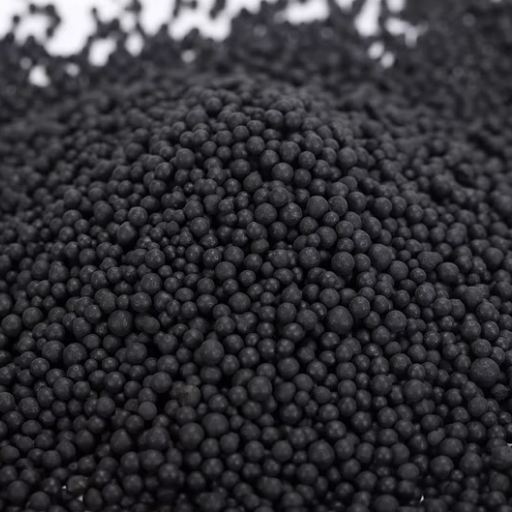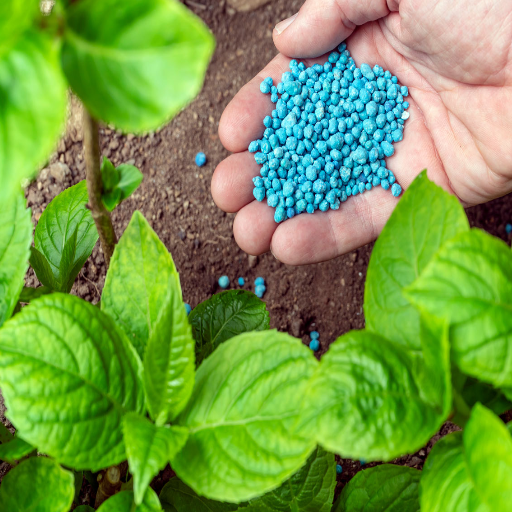Nitrogen is one of the most vital nutrients for plant growth, playing a key role in photosynthesis and the production of healthy foliage. However, maintaining an adequate nitrogen level in your soil can be a challenge, especially when using organic farming methods that prioritize sustainable and eco-friendly practices. If you’ve been searching for effective organic solutions to enrich your soil with this essential nutrient, you’ve come to the right place. This guide explores the best organic fertilizers that are high in nitrogen, providing detailed insights into their sources, benefits, and how they can be applied to optimize plant health and soil fertility. Whether you’re a seasoned gardener or just starting, understanding how to naturally boost nitrogen levels in your soil will give your plants the strong foundation they need to thrive.
Understanding Organic Fertilizers

The Eco-Friendly Nature of Organic Fertilizers
Organic fertilizers occur naturally, from plant residues to animal manures and composted materials, and, therefore, are sustainable. Being biodegradable, they slowly release nutrients, unlike synthetic ones, thus minimizing the nutrient runoff that damages the waterways. This slow release is what makes organic fertilizer an improvement for its soils while keeping the wider environment safe.
Organic fertilizers tend to enhance the soil’s structure and increase microbial activity. Being carbon-rich substances, they nourish beneficial microflora, thus raising the soil’s overall health. The rise in microbial activity increases nutrient availability and water retention capacity in the soil, which are essential requirements for plant growth and adaptation in varying environmental conditions.
Organic fertilizers may also help reduce dependency on chemical fertilizers and ensure agricultural sustainability over time. These fertilizers convert natural waste into fertilizer, promote a circular resource strategy while minimizing landfill waste and associated greenhouse gas emissions from conventional fertilizers production, making them integral to any garden vegetable, including commercial organic farming.
Advantages of Organic Over Synthetic Fertilizers
- Environmental Sustainability: As organic fertilizers come from natural sources like composting, manure, and plant-based matter, they contribute significantly less to environmental degradation as compared to synthetic fertilizers. The industrial production process for synthetic fertilizers consumes high amounts of energy and thus comprises approximately 1.2 percent of global energy consumption while generating greenhouse gases.
- Improvement of the Soil Condition: Soils improved with organic fertilizers tend to have better structure, enhanced water retention capacity, and aeration courtesy of increases in soil organic matter content. Synthetic fertilizers do tend to degrade soil nutrients over time; however, studies show that organic fertilizers stimulate soil microbial activities and biodiversity for sustained soil fertility.
- Reduction of Chemical Runoff: Organic fertilizers do not leach into water bodies, creating problems such as algal blooms and aquatic dead zones, unlike synthetic fertilizers; rather, they release nutrients into the system slowly and avoid heavy-handed application. The slow and controlled release of nutrients thus protects water bodies from pollution, thereby conserving environmental ecosystems.
- Food Production Safety: Because crops grown with organic fertilizers tend to accumulate less chemical residue, organic fertilizers are deemed safe for food production. This is particularly relevant to organic crop production certified under stringent agricultural regulations for human health and welfare.
- Economic Viability in the Long Term: Organic fertilizer requires a bigger initial investment or more labor, but then gradually leads to less dependence on industrial inputs and more sustainable agricultural practices. Organic fertilizers encourage natural processes for replenishing soil nutrients, thereby reducing the frequency of chemical applications and subsequently saving money for farmers.
These five factors together constitute a series of reasons in favor of organic fertilizer use as a path to sustainable agriculture that can maintain productivity and environmental balance.
Key Ingredients in Organic Fertilizers
Organic fertilizers consist of naturally derived components that work on enhancing soil health and supplying necessary nutrients for the growth of plants. Listed below are the chief ingredients usually contained in organic fertilizers:
- Animal Manure: Rich in nitrogen, phosphorus, and potassium, animal manure is obtained from animals such as cows, chickens, and horses. These nutrients help in the development of strong roots, vigorous growth, and increased crop yield. Proper composting of manure kills all pathogens before application.
- Composted Plant Material: Decomposed plant matter can be a mixture of anthropogenic origin, such as food scraps, or natural origin, such as crop residues. It improves the soil structure, water retention capacity, and microbial concentration. It releases nutrients slowly and hence aids in maintaining soil fertility over an extended period.
- Bone Meal: An excellent source of phosphorus and calcium, bone meal is produced from finely ground animal bones. Phosphorus improves root development, and calcium strengthens cell walls. Bone meal is suitable for flowering and fruiting plants.
- Seaweed Extracts: These extracts act as trace mineral fertilizers containing some growth hormones and vitamins vital for plant health. These help in the absorption of nutrients, resist stress, and promote the overall growth of the plant.
- Crop Residues: Agricultural byproducts such as straw, husks, and other plant wastes are shredded and composted to provide organic carbon to the soil. This ingredient feeds soil microorganisms and helps with soil aeration.
By incorporating these main ingredients, organic fertilizers act as a sustainable and environment-friendly alternative to synthetic fertilizers. The natural processes underpinning the production of organic fertilizers restore exhausted soils while supporting biodiversity and reducing chemical runoff. In the long term, the fairly balanced nutrient compositions of these fertilizers encourage healthy plants and resilient ecosystems.
The Role of Nitrogen in Plant Growth
Importance of Nitrogen for Foliage and Roots
Nitrogen is essential for the synthesis of chlorophyll, such pigment considered vital for photosynthesis, which converts sunlight into usable energy. The functioning and condition of leaves largely depend on nitrogen’s supply, as it is a significant ingredient in enzymes that go into the construction of amino acids, the basic constituent of all proteins. Plants use nitrogen to produce enzymes and structural proteins for the development of leaves and an efficient photosynthetic process. Nitrogen deficiency begins to show up as stunted growth and chlorosis, or yellowing of leaves, with plants unable to carry out effective energy synthesis, thereby gravely affecting their overall health and productivity.
However, if we’re talking about nitrogen and roots, its effect on roots differs from its effect on foliage. It propels the formation of lateral roots and root hairs, which increase water absorption and additional nutrients from the soil. A root system structure well supported by adequate nitrogen availability in the soil during critical phases of plant growth will ensure the plant will not lose absorption and uptake of other nutrients during those phases. This concept becomes even more significant for crops growing in soils wherein the supply of other nutrients is variable, as a robust rooting network can help alleviate stress caused by deficiencies in other macro- or micronutrients.
With recent advancements in agricultural research, the adaptation of nitrogen input to the particular needs of differing plant species and growth stages has gained foremost importance. For instance, it has been shown that optimizing nitrogen levels during the early growth stages markedly increases biomass accumulation and metabolic activity, thus greatly enhancing the organism’s ability to develop and reproduce during later stages. On the other hand, a heavier supply of nitrogen often causes nitrate leaching and environmental pollution, besides influencing the root-shoot ratio adversely, necessitating its balanced supply in the right quantities and at the right times through integrated nutrient management practices. Soil nitrogen sensors and predictive modeling form the class of precision agriculture tools that can provide actionable insights for maintaining the right nitrogen availability for sustainable plant growth and soil health in the long term.
How Nitrogen Affects Overall Plant Development
Nitrogen is indeed the most limiting nutrient among all macronutrients affecting numerous physiological and biochemical activities, and thus essential for overall growth. It assumes a central role in chlorophyll synthesis; chlorophyll is the main photosynthetic pigment, and photosynthesis drives energy production inside a plant. Nitrogen is also the element present in amino the building blocks of proteins, in nucleic acids-DNA and RNA-that carry out genetic functions and control cell growth, respectively. Vegetative growth is promoted with adequate nitrogen supply through cell division and elongation, ensuring healthier and stronger plants.
However, the effect of nitrogen on plant growth differs from productivity. Root morphogenesis, architecture of shoots, and flowering patterns are regulated via differential nutrient supply. A finely balanced nitrogen level ensures the development of strong root systems that can absorb water and plant nutrients well, while also allowing shoots with sufficient leaf surface area for carbon fixation. Excess nitrogen tends to mar normal plant development by way of delaying flowering or fruiting, as the long vegetative growth period occurs. Nitrogen deficiency can severely impair general plant growth, with signs being chlorosis or yellowing of leaves, and reduction of metabolic activities.
Investigations that include soil- and plant-health-based sensing and site-targeted nitrogen application are currently pointing toward a future with even higher NUE. Thus, plants would always be provided with sufficient nitrogen in order not to cause environmental issues such as nitrogen runoff, which causes eutrophication of the water bodies. Future scenarios that blend genetic knowledge and advanced modeling will push nitrogen utilization a step forward in instigating a sustainable agricultural system that compromises neither productivity nor ecosystem integrity.
Signs of Nitrogen Deficiency in Plants
Nitrogen deficiency in plants is a vital concern that may gravely hamper agriculture and plant health. Most common to the appearance of nitrogen-deficient symptoms is chlorosis or yellowing of older leaves. Since nitrogen is a mobile nutrient, it gets translocated in plants from older leaves to young tissues when there is a shortage. In the process, older leaves lose their pigmentation because they are unable to produce chlorophyll in sufficient quantities, which would otherwise impair their photosynthetic ability. Growth of the nitrogen-deficient plants is inhibited with smaller and fewer leaves since nitrogen is responsible for amino acids, and in turn, proteins and nucleic acids, all of which are very important to plant growth and development.
Visible symptoms of a lack of nitrogen include a substantial reduction in the yield and quality of crops. Lack of nitrogen restricts root growth and hence limits water and nutrient uptake, which otherwise would have enhanced plant resilience. For instance, cereal plants, which heavily depend on nitrogen to produce grains, would record lower kernel production and weak grain quality if subjected to prolonged nitrogen stress. Similarly, pale and underdeveloped foliage of marketable crops such as lettuce and spinach can be observed. It is worth noting that during certain environmental conditions, such as poor soil fertility, heavy rainfall causing leaching, or over-reliance on organic agriculture without appropriate soil management strategies, nitrogen deficiency may become more pronounced.
Precision agriculture and real-time diagnostics have come to the rescue in systematic treatments of nitrogen insufficiency. Advanced technologies, including chlorophyll meters and remote sensing by drones, pick up early chlorosis signals and measure nitrogen at leaf and canopy scale so farmers can act upon corrective steps. Besides, precision fertilization procedures using Enhanced Efficiency Fertilizers (EEFs) or slow-release nitrogen formulations ensure that nitrogen reaches the plants at the right rate and at the right time, thereby minimizing environmental losses. An integrated approach that includes genetic improvements for enhanced nitrogen uptake efficiency combined with modern agricultural practices should thus prove win-win for the farmers in effectively mitigating any associated situations with nitrogen deficiency, going along with the production side as well as the sustainability front.
High-Nitrogen Organic Fertilizers

Fish Emulsion and Fish Fertilizer: Liquid Nutrition
Fish emulsion and fish fertilizer are nutrient-dense organic products made from fish byproducts, providing a suitable blend of essential macro and micronutrients. These fertilizers usually carry high nitrogen content with values between 2% and 5%, depending upon the type of formulation and source materials. They also offer phosphorus, potassium, and trace elements like calcium and magnesium, which are conducive to strong plant growth.
The manufacturing process may include enzymatic hydrolysis or acid stabilization, thus preserving amino acids and other good organic entities that maintain and improve soil conditions and microbial growth. In liquid form, application by foliar spray or by soil drenching promotes faster absorption of nutrients by plants, thereby enhancing plant vitality. In combination with improvements in organic fertilizer technology, such as low-odor formulations and stabilized nitrogen compounds, they become even more user-friendly and maintain environmental safety.
Field trials have revealed the accelerating effects of fish-based fertilizers on vegetative growth and improvements in overall crop yields. Together with controlled application methods, such fertilizers build sustainable agricultural systems that enrich soil fertility, minimizing chemical inputs. Because of their versatility, fish fertilizers are well-suited for use in both conventional and organic farming systems.
Composted Manure: A Balanced Organic Option
Manure is one of the best organic fertilizers prepared from animal waste and other organic matter under controlled conditions. This treatment method kills harmful pathogens and stabilizes nutrients, thus making nutrients more readily available for plant uptake. The nutrient content of a composted manure would depend on the species; hence, poultry manure would normally have a higher nitrogen content than cattle manure, thus probably being more useful for crops like corn, which have high nitrogen requirements.
Composted manure improves soil structure by adding organic matter, subsequently improving the capacity of water retention and promoting the beneficial soil microorganisms. Studies on agriculture reveal composted manure-treated soils to have a good stability of soil aggregates with nutrients slowly released from the soil, thus less prone to nutrient leaching. Hence, composted manure would be a good choice for soil fertility management in the long run.
It is therefore recommended to apply composted manure into the soil a few weeks before planting to allow nutrients to be absorbed and thus prevent any nitrogen drawdown issues. By combining both traditional composting methods and modern agricultural technology, composted manure will continue to be a crucially important and sustainable fertilizer option for growers who aim to strike a healthy balance between crop productivity and ecologically sound practices.
Alfalfa Meal and Its Benefits for Growth
Alfalfa meal comes from the drying and grinding of alfalfa leaves and serves as a nutrient-laden organic soil amendment that promotes healthy plant growth. It is nitrogen, potassium, and phosphorus, with trace minerals such as magnesium, calcium, and sulfur, all of which contribute to a plant’s health and development. Alfalfa meal is also rich in triacontanol, which absorbs growth-promoting aspects, stimulating photosynthesis and growth in root development and overall vigor.
Explicitly, the studies in recent times show alfalfa meal application as a slow-release fertilizer, slowly and steadily giving nutrients to the plants as they grow. On the other hand, besides nutrients, the presence of alfalfa meal enhances soil structure and stimulates microbial activity while improving water retention capacity. It is an inexhaustible resource for organic farming systems because it is in agreement with ecological approaches used in promoting sustainable crop production.
Alfalfa meal is usually applied in dosage between 5 to 10 pounds per 100 square feet for general soil enrichment purposes and has exhibited effects on yield and biomass production for many plant types. Application rate, however, should be fine-tuned depending on soil tests for ensuring nutrient balance and avoiding over-fertilization, thus rendering it a very flexible and efficient choice for both farmers and gardeners so as to maintain soil and plant health in the long run.
Application Methods for High-Nitrogen Fertilizers

How to Use Blood Meal Effectively
Blood meal is an organic fertilizer high in nitrogen that stimulates strong vegetative growth in soils deficient in nitrogen. The application of blood meal mainly depends on the soil composition and crop requirements. For general application, blood meal should be applied at the rate of 2-3 pounds per 100 square feet, but this varies according to soil analyses and crop needs.
The application of blood meal consists of spreading it evenly over the soil surface and lightly mixing it with the top few inches of soil for efficient absorption. For container plants, incorporate them in small quantities into the potting mixture at planting time, or apply as a side-dressing for established plants. Do not place blood meal near plant stems or roots since the high nitrogen content may cause localized nutrient stress or burn tissues that are sensitive.
In general, blood meal gives the best results when incorporated into a balanced fertilization program. It is essential to monitor soil pH and make sure it is in the ideal range of 6.0 to 7.0 because extreme pH may influence nutrient availability. Some soil-testing practice for nitrogen levels is also necessary to avoid excessive application of blood meal, which leads to nutrient leaching, environmental harm, and excessive foliage growth at the cost of fruit or flower development.
In addition, the inclusion of blood meal in a crop rotation or an organic soil amendment program may ensure long-term advantages with regard to microbial activity and soil fertility. Nitrogen release through the decomposition of blood meal and stimulation of beneficial soil microorganisms improve soil structure and overall plant health. Keep blood meal in a dry, sealed container to inhibit moisture absorption, spoilage, or nutrient degradation.
Applying Fish Emulsion in Your Garden
I mix fish emulsion by first diluting it according to the manufacturer’s instructions, usually using one to two tablespoons to a gallon of water. This ensures that the concentration of nutrients is such that it can be absorbed by plants but does not cause burn to the root or foliage. After dilution, I then go about watering with the solution using a watering can, a sprayer, or even a hose-end-type applicator to obtain an even distribution across the garden.
The best times to administer fish emulsion would be early in the morning or late in the afternoon, when temperatures are cooler and plants can take up nutrients without stressing from heat. I ensure that the solution goes straight to the soil around the plants’ base, so the nutrients soak in very fast through the soil and become accessible to the roots. In foliar feeding, I lightly spray the leaves on both sides with an even coverage to avoid oversaturation.
During active growth, I apply fish emulsion every two to three weeks, providing a balanced supply of nitrogen, phosphorus, and potassium that enhances plant spirit and vigor, especially for leafy greens, flowers, and even fruiting plants. Monitoring plant responses and altering application rates accordingly allows me to maintain the best mix of nutrients in my garden for sustained growth and productivity.
Best Practices for Compost Manure Application
As a general rule, composted manure is one of the best organic matter amendments to enrich the soil, improve soil structure, and supply nutrition for plants. Depending on the soil type and crops, application of composted manure must be done in a timely and proper manner to obtain maximum advantages. In the process, soil testing is done before application to procure existing nutrient levels, pH, and overall composition. Hence, the addition of manure addresses the nutrient deficiency while avoiding excess that can cause nutrient runoff and affect the environment.
Application of composted manure should be carried out evenly over the soil surface and incorporated in the top few inches of soil to make nutrients available for absorption by plant roots. The recommended quantity of composted manure applied and mixed into the soil on an annual basis ranges from about 1 to 3 inches, depending on the crop. It is important to take some considerations by allowing proper time between application and planting, especially for fresh composted manure, in order to reduce the threat of pathogens.
In the interest of soil health improvement, composted manure should be used within nutrient management planning that may rotate its use with green manures, cover crops, and synthetic fertilizers as required in balanced amounts. Documenting inputs for nutrients and crop yields over successive growing seasons will ensure that it is sustainable and productive in the long run while minimizing its negative impacts on the environment.
Selecting the Right High-Nitrogen Fertilizer

Considerations Based on Plant Type
Firstly, the selection of a fertilizer rich in nitrogen must take into account the nutrient requirements of the particular plant species in question. Crops that require high levels of nitrogen, such as corn, wheat, and leafy greens, require fertilizers with higher nitrogen content for proper growth and productivity. Being that there are different sources of readily available nitrogen when the plants require it during their vegetative growth, corn typically receives urea (46-0-0) or ammonium nitrate fertilizers. Similarly, leafy vegetables, including spinach and lettuce, do well with nitrate-heavy fertilizers for good foliage growth.
In contrast, nitrogen application must be managed to avoid excessive vegetative growth in fruit or flower development in plants such as tomatoes or strawberries. Fertilizers with a controlled release of nitrogen or organic alternatives such as blood meal may be used to provide slow nitrogen uptake while reducing the risk of leaching or over-fertilization.
Legumes such as soybeans and peas require minimal nitrogen fertilization, as these plants fix nitrogen from the atmosphere in a symbiotic relationship with Rhizobia bacteria. Excess nitrogen may deter this process and thus lessen the efficiency of nutrient synthesis. Hence, all factors, including plant types, growth stages, and production objectives, need to be incorporated into nitrogen management schemes to ensure that there is agronomic success and the environment is safeguarded.
Choosing Fertilizers for Different Soil Types
Choosing the appropriate fertilizers for different soils is vital to maximizing crop yields and maintaining soil health. Different soils exhibit varying physical and chemical properties, and these, in turn, influence nutrient availability and uptake. For example, sandy soils generally have almost no organic matter and hence are poor in water retention; nitrogen fertilizers should be applied in small doses but at frequent intervals so as to avoid leaching. On the other hand, clay soils retain nutrients well, but phosphorus and potassium fertilizers may be required to prevent fixation and keep nutrients available to plants.
For acidic soils, where pH is usually lower than 6.0, lime (calcium carbonate) is required to raise the pH and help nutrient availability. Such soils might also respond well to balanced NPK fertilizers or slow-release formulations that assure enhanced nutrient efficiency with time. Alternatively, alkaline soils with a pH of 7.5 or more may require application with sulfur-based or ammonium-based fertilizers to bring down the pH and allow easy accessibility of nutrients.
However, saline soils with high concentrations of salts can impede plant growth and hence need to be carefully managed. Low salt index fertilizers like organic composts or liquid formulations would help ease salt stress effects on plants, thereby improving the soil structure. The majority of the best fertilizers should, therefore, be selected only after conducting adequate soil tests to adjust inputs on the nutrient requirements of the particular soil for increased precision and sustainability in nutrient management practices.
Aligning Fertilizer Selection with Gardening Goals
It is important for one to choose fertilizers according to the aims of their gardening project. For instance, if the intent is for the plants to exist in vigorous growth and yield, nitrogen fertilizers are often recommended since nitrogen is essential for chlorophyll and vegetative development. Leguminous crops, on the other hand, might need fertilizers that are more phosphorus- or potassium-based to assist with flowering and root development, respectively. Hence, matching fertilizer types to desired outcomes depends on knowledge of the plant’s life cycle and nutritional demands.
Selection should also consider the physical and chemical properties of the soils. Based on the analysis of a soil test, one could detect if a soil is lacking in major nutrients such as nitrogen (N), phosphorus (P), or potassium (K). The fertilizer nutrient ratio needs to be adjusted accordingly to correct such deficiencies without allowing overapplication of any of its elements. For example, in soils high in nitrogen, overuse of nitrogen fertilizers may cause leaching into groundwater or hinder the uptake of other nutrients like potassium or magnesium. Support from GIS mapping tools in modern precision agriculture further enhances fertilizer application, putting the resources where they are needed the most.
Finally, an imperative consideration when making selections is the sustainability of fertilizers. Organic options augment soil health as they increase organic matter content in the soil and microbial activity; conversely, synthetic fertilizers are decent but should be used responsibly to avoid environmental hazards, such as acidification of soils or salt accumulation. The use of controlled-release fertilizers or split application methods can help avoid some adverse effects by matching nutrient release to plant uptake rates. Fertilizer choice, therefore, forms an interface between gardening goals and environmental stewardship, ensuring that these two aspects have the gardeners’ utmost attention and, ultimately, better gardening results.
References
Frequently Asked Questions (FAQ)
Q: What organic fertilizer is high in nitrogen?
A: One of the best organic fertilizers high in nitrogen is feather meal, which is made from dried feathers and contains a high percentage of nitrogen, typically around 13-0-0. Other options include fish meal and bat guano, which are also rich in nitrogen content.
Q: How does feather meal release nitrogen into the soil?
A: Feather meal releases nitrogen slowly as it breaks down, providing a steady supply of nitrogen in the soil over time. This slow-release property makes it an excellent choice for lawn care and vegetable gardens.
Q: Can I use liquid fertilizer for lawns that need nitrogen?
A: Yes, liquid fertilizers can be effective for lawns needing nitrogen. Look for water-soluble formulas that are rich in nitrogen, such as those containing fish emulsion or seaweed extracts.
Q: Is bat guano effective for boosting nitrogen levels?
A: A: Yes, bat guano is a potent organic fertilizer that is high in nitrogen. It not only enhances nitrogen in the soil but also improves overall soil health due to its microbial content.
Q: What are some quick-release organic fertilizers high in nitrogen?
A: Quick-release organic fertilizers high in nitrogen include fish meal and blood meal. These products can provide an immediate boost of nitrogen to plants, making them suitable for quick lawn and garden applications.
Q: How can I improve nitrogen levels in my vegetable garden?
A: To improve nitrogen levels in your vegetable garden, consider adding organic fertilizers such as feather meal, crab meal, or a liquid fish fertilizer. These will help increase nitrogen availability for your plants.
Q: Are there any organic fertilizers that are water-soluble and high in nitrogen?
A: Yes, some organic fertilizers are water-soluble and high in nitrogen, such as liquid fish fertilizers and certain kelp products. These can provide quick nitrogen boosts when mixed with water.
Q: What role does nitrogen play in lawn and turf health?
A: Nitrogen is a key component of chlorophyll, which is essential for photosynthesis in grass and plants. Adequate nitrogen levels promote lush green growth, enhancing the overall health and appearance of lawns and turf.
Q: Can I use shrimp meal as a nitrogen source?
A: Yes, shrimp meal is an effective organic fertilizer that can provide a good source of nitrogen. It is often used in container mixes and as a soil amendment to boost nitrogen levels for various plants.







